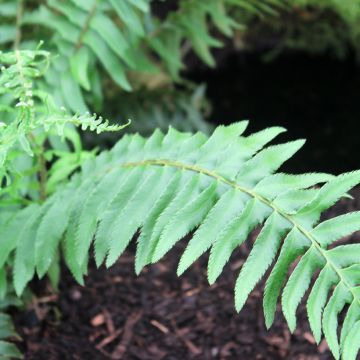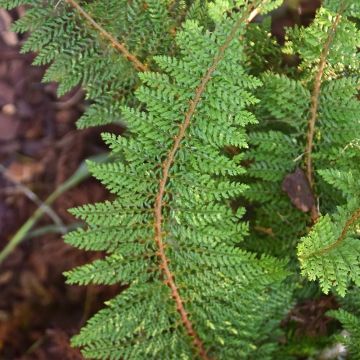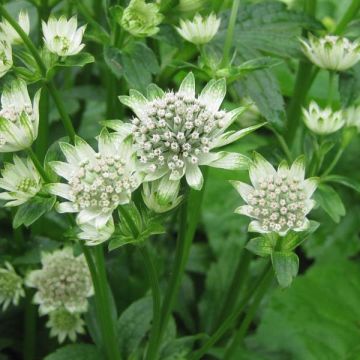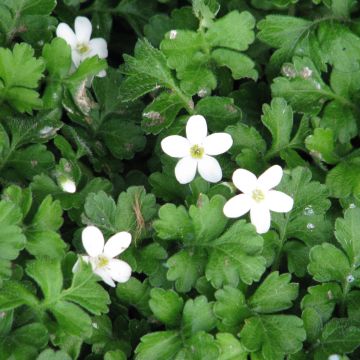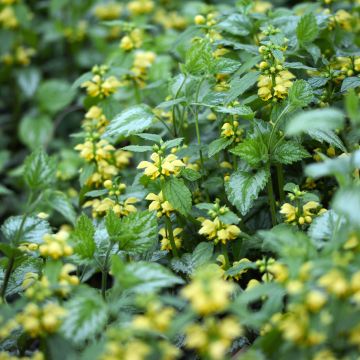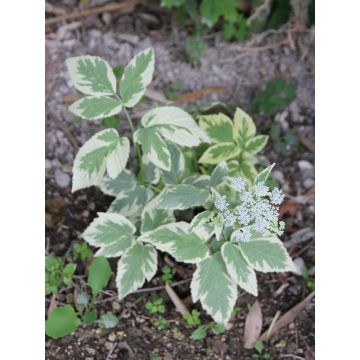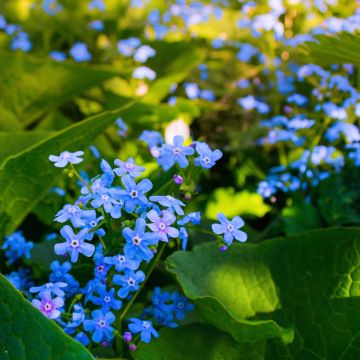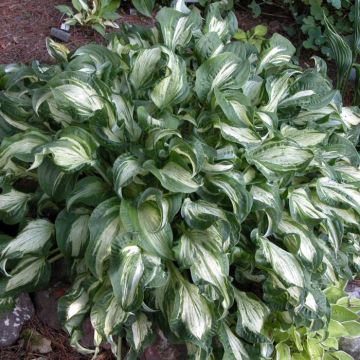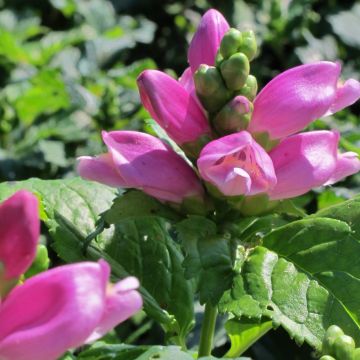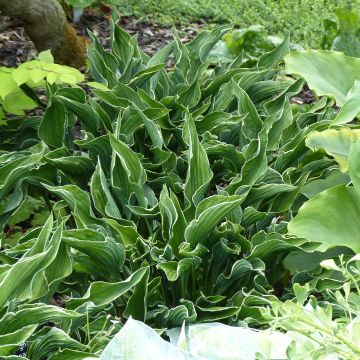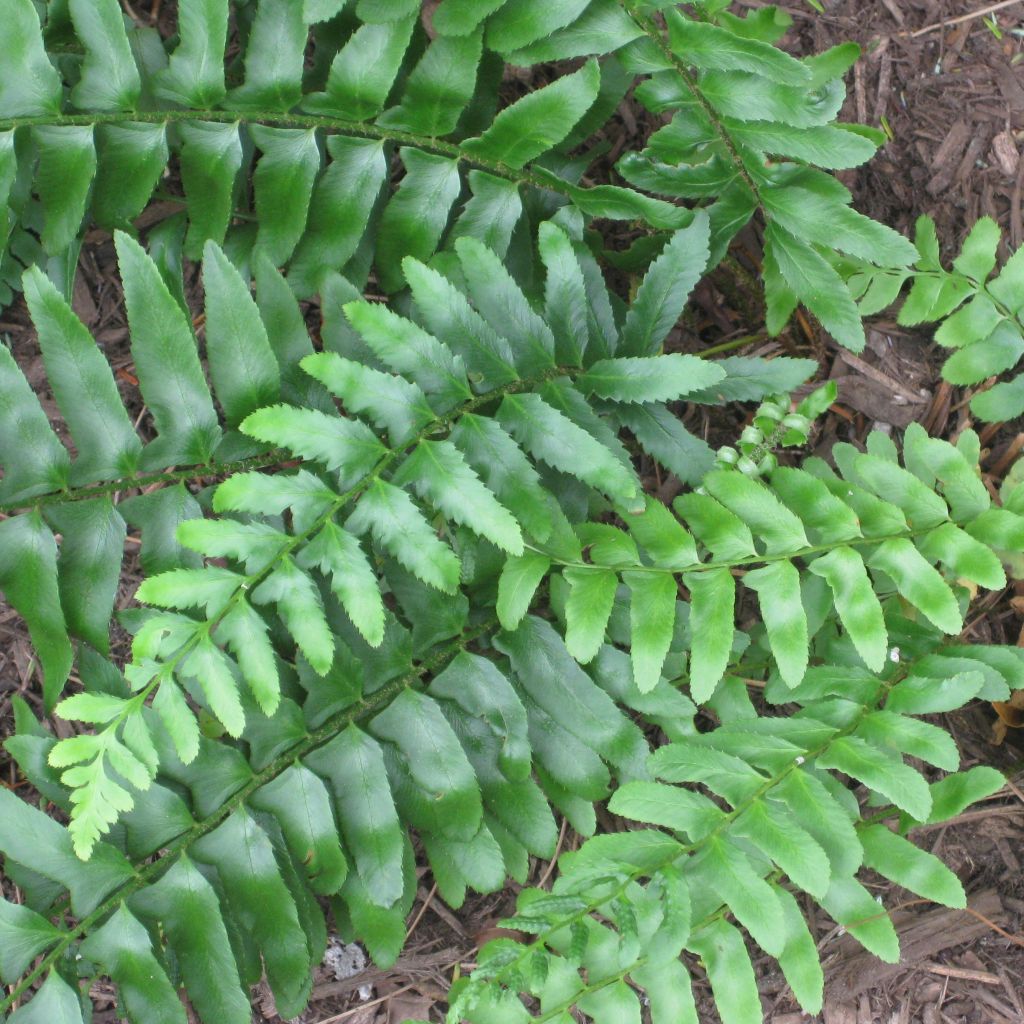

Polystichum acrostichoides - Christmas Fern
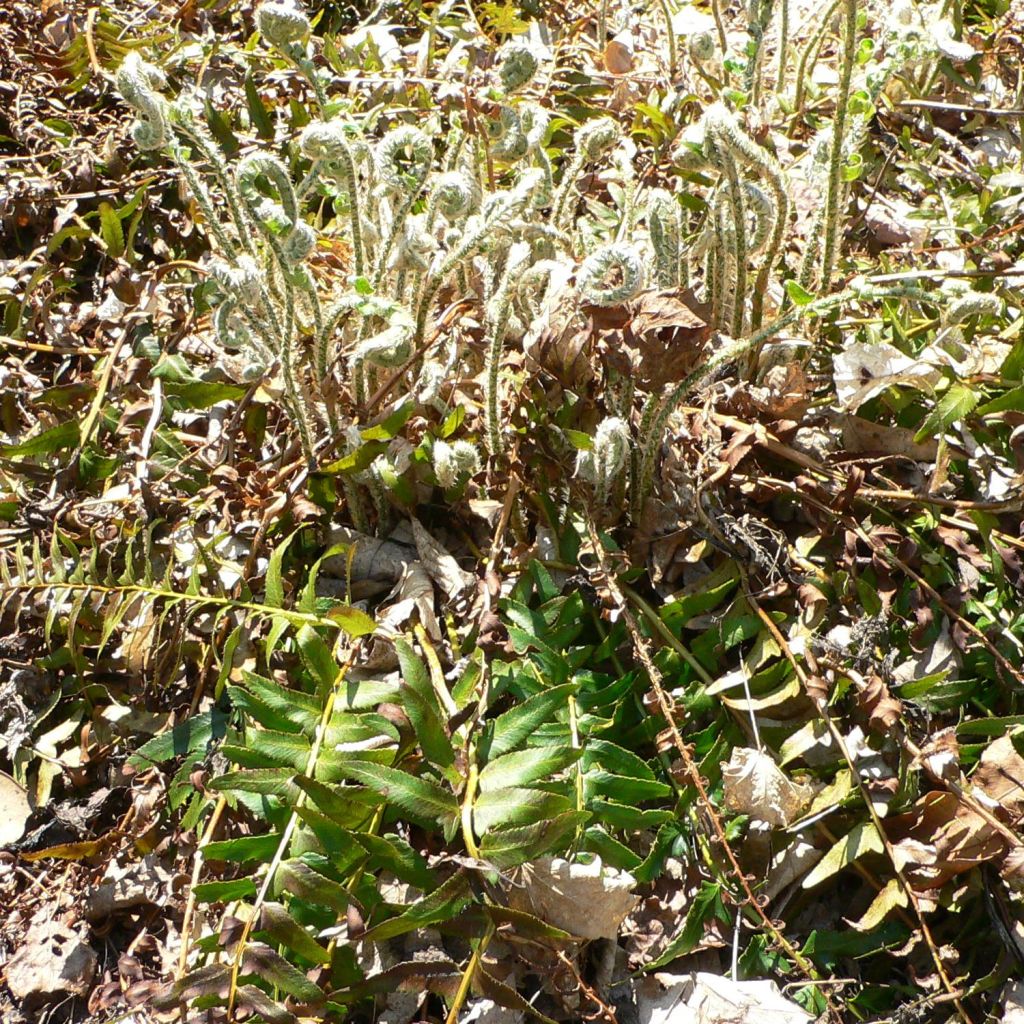

Polystichum acrostichoides - Christmas Fern
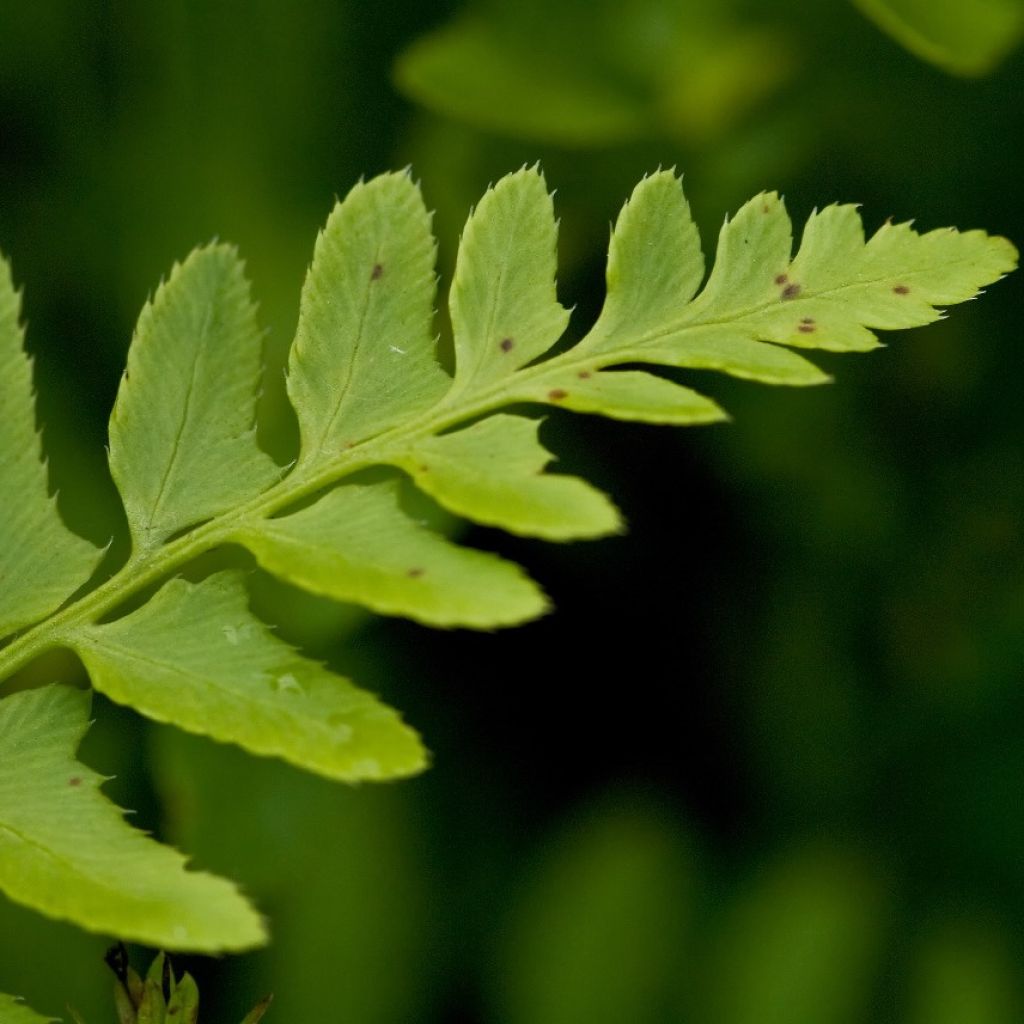

Polystichum acrostichoides - Christmas Fern
Polystichum acrostichoides - Christmas Fern
Polystichum acrostichoides
Christmas Fern
Lovely foliage for this fern which has acclimatised very well to the shade at the base of a constantly damp wall.
Anne , 20/10/2024
This item cannot be shipped to the selected country
Delivery charge from €5.90
More information
Schedule delivery date,
and select date in basket
This plant carries a 12 months recovery warranty
More information
We guarantee the quality of our plants for a full growing cycle, and will replace at our expense any plant that fails to recover under normal climatic and planting conditions.
From €5.90 for pickup delivery and €6.90 for home delivery
Express home delivery from €8.90.

Does this plant fit my garden?
Set up your Plantfit profile →
Description
Polystichum acrostichoides, known as Christmas Fern, is a terrestrial fern widely found in North American meadows, which gets its name from its long evergreen and tough dark green fronds, decorative even in the heart of winter. In spring, pretty silver-white croziers appear near the base, unfolding into young fronds with metallic reflections, then growing into a perfect crown while darkening throughout the summer. It is one of the few species that tolerates dry soils and proves capable of adapting to various growing conditions. It will easily naturalise among dense shrubs or under moderately growing trees.
Christmas Fern is one of the most common ferns in North America, where it is found in a variety of habitats. It is a perennial plant of the Dryopteridaceae family, closely related to male fern. Polystichum acrostichoides forms a dense fountain-like clump, reaching a height and width of 40 to 60 cm (16 to 24 in). The sterile fronds form the flexible and trailing outer crown, while the fertile fronds, upright and narrow, form the centre. The mature fronds are distinctive and resemble a large Polypodium vulgare: they are tough, lanceolate, evergreen, measuring 30 to 80 cm (12 to 32 in) in length and 5-12 cm (2-5 in) in width. They are pinnate and composed of 20 to 35 pairs of pinnae. Spores are produced on small pinnae located towards the top of the frond. The emerging young croziers in spring are beautifully silver. The trailing rhizomes of this fern allow it to form beautiful colonies in a few years.
The Polystichum genus consists of a wide variety of particularly decorative plants throughout the year in most species and varieties. Christmas Fern adapts to many situations, making it accessible to every garden and gardener. We grow it among rocks in our shaded and cool rock garden. Its large glossy fronds can be used to create lovely arrangements for festive tables, at a time of year when flowers are scarce. In a woodland setting, it can be paired with simple plants such as butcher's broom, holly, mahonias, or cotoneasters. On a shady slope, it can be neighbours with hart's-tongue ferns or a sturdy and undemanding conifer like microbiota decussata. In a more refined bed, it can accompany, for example, fuchsias, lysimachias, and two-toned eucomis.
Report an error about the product description
Polystichum acrostichoides - Christmas Fern in pictures
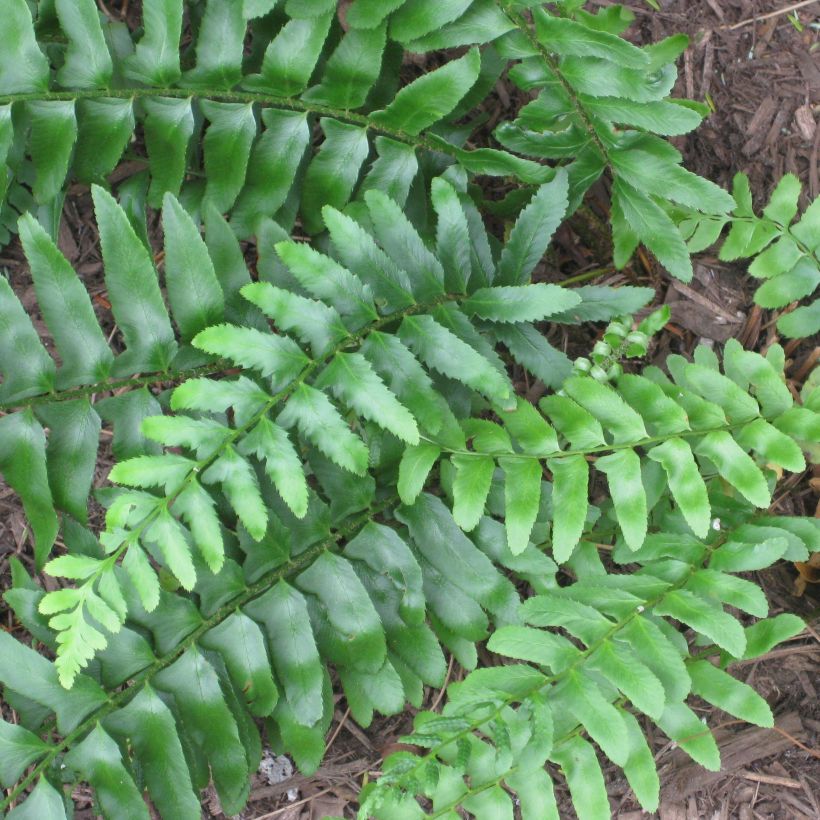

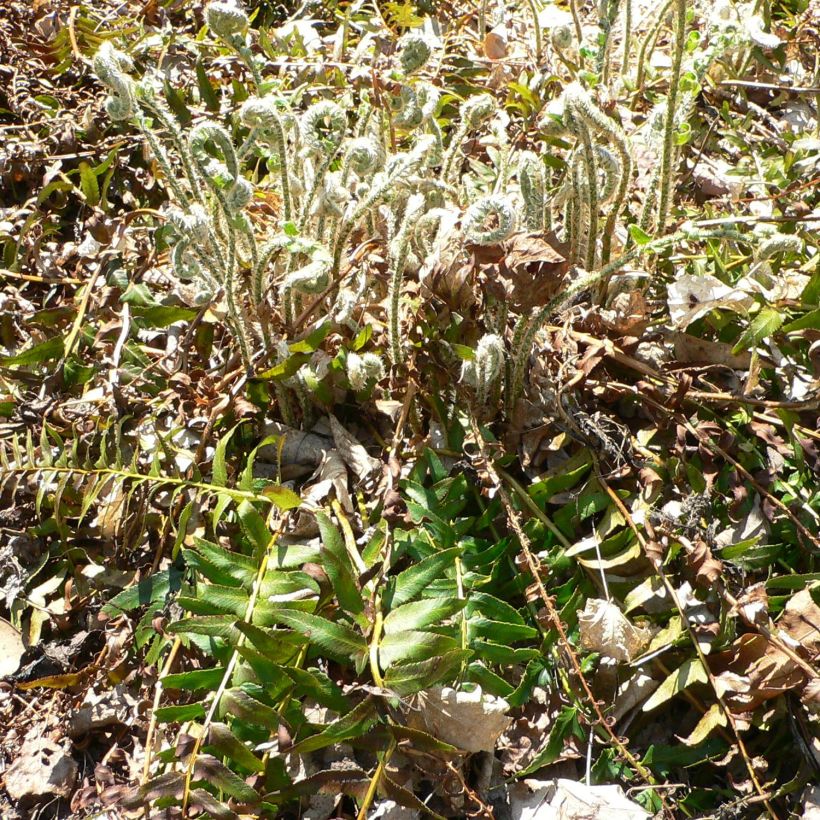

Foliage
Plant habit
Botanical data
Polystichum
acrostichoides
Dryopteridaceae
Christmas Fern
North America
Other Polystichum
Planting and care
The Christmas Fern is easy to grow on a slope or among rocks, in a shady and cool location, in non-calcareous soil. The old fronds of these ferns should be cut back in early spring, flush with the stump, so that you can fully enjoy the extraordinary spectacle offered by the growth of new fronds each year. It has been observed that this fern can be used to retain soils and protect them from erosion on steep slopes. The fronds are semi-erect until the first frost, then they bend down to lie flat on the ground, while retaining dead leaves so that they decompose and transform into humus.
Planting period
Intended location
Care
-
, onOrder confirmed
Reply from on Promesse de fleurs
Shade-loving perennials
Haven't found what you were looking for?
Hardiness is the lowest winter temperature a plant can endure without suffering serious damage or even dying. However, hardiness is affected by location (a sheltered area, such as a patio), protection (winter cover) and soil type (hardiness is improved by well-drained soil).

Photo Sharing Terms & Conditions
In order to encourage gardeners to interact and share their experiences, Promesse de fleurs offers various media enabling content to be uploaded onto its Site - in particular via the ‘Photo sharing’ module.
The User agrees to refrain from:
- Posting any content that is illegal, prejudicial, insulting, racist, inciteful to hatred, revisionist, contrary to public decency, that infringes on privacy or on the privacy rights of third parties, in particular the publicity rights of persons and goods, intellectual property rights, or the right to privacy.
- Submitting content on behalf of a third party;
- Impersonate the identity of a third party and/or publish any personal information about a third party;
In general, the User undertakes to refrain from any unethical behaviour.
All Content (in particular text, comments, files, images, photos, videos, creative works, etc.), which may be subject to property or intellectual property rights, image or other private rights, shall remain the property of the User, subject to the limited rights granted by the terms of the licence granted by Promesse de fleurs as stated below. Users are at liberty to publish or not to publish such Content on the Site, notably via the ‘Photo Sharing’ facility, and accept that this Content shall be made public and freely accessible, notably on the Internet.
Users further acknowledge, undertake to have ,and guarantee that they hold all necessary rights and permissions to publish such material on the Site, in particular with regard to the legislation in force pertaining to any privacy, property, intellectual property, image, or contractual rights, or rights of any other nature. By publishing such Content on the Site, Users acknowledge accepting full liability as publishers of the Content within the meaning of the law, and grant Promesse de fleurs, free of charge, an inclusive, worldwide licence for the said Content for the entire duration of its publication, including all reproduction, representation, up/downloading, displaying, performing, transmission, and storage rights.
Users also grant permission for their name to be linked to the Content and accept that this link may not always be made available.
By engaging in posting material, Users consent to their Content becoming automatically accessible on the Internet, in particular on other sites and/or blogs and/or web pages of the Promesse de fleurs site, including in particular social pages and the Promesse de fleurs catalogue.
Users may secure the removal of entrusted content free of charge by issuing a simple request via our contact form.
The flowering period indicated on our website applies to countries and regions located in USDA zone 8 (France, the United Kingdom, Ireland, the Netherlands, etc.)
It will vary according to where you live:
- In zones 9 to 10 (Italy, Spain, Greece, etc.), flowering will occur about 2 to 4 weeks earlier.
- In zones 6 to 7 (Germany, Poland, Slovenia, and lower mountainous regions), flowering will be delayed by 2 to 3 weeks.
- In zone 5 (Central Europe, Scandinavia), blooming will be delayed by 3 to 5 weeks.
In temperate climates, pruning of spring-flowering shrubs (forsythia, spireas, etc.) should be done just after flowering.
Pruning of summer-flowering shrubs (Indian Lilac, Perovskia, etc.) can be done in winter or spring.
In cold regions as well as with frost-sensitive plants, avoid pruning too early when severe frosts may still occur.
The planting period indicated on our website applies to countries and regions located in USDA zone 8 (France, United Kingdom, Ireland, Netherlands).
It will vary according to where you live:
- In Mediterranean zones (Marseille, Madrid, Milan, etc.), autumn and winter are the best planting periods.
- In continental zones (Strasbourg, Munich, Vienna, etc.), delay planting by 2 to 3 weeks in spring and bring it forward by 2 to 4 weeks in autumn.
- In mountainous regions (the Alps, Pyrenees, Carpathians, etc.), it is best to plant in late spring (May-June) or late summer (August-September).
The harvesting period indicated on our website applies to countries and regions in USDA zone 8 (France, England, Ireland, the Netherlands).
In colder areas (Scandinavia, Poland, Austria...) fruit and vegetable harvests are likely to be delayed by 3-4 weeks.
In warmer areas (Italy, Spain, Greece, etc.), harvesting will probably take place earlier, depending on weather conditions.
The sowing periods indicated on our website apply to countries and regions within USDA Zone 8 (France, UK, Ireland, Netherlands).
In colder areas (Scandinavia, Poland, Austria...), delay any outdoor sowing by 3-4 weeks, or sow under glass.
In warmer climes (Italy, Spain, Greece, etc.), bring outdoor sowing forward by a few weeks.






































